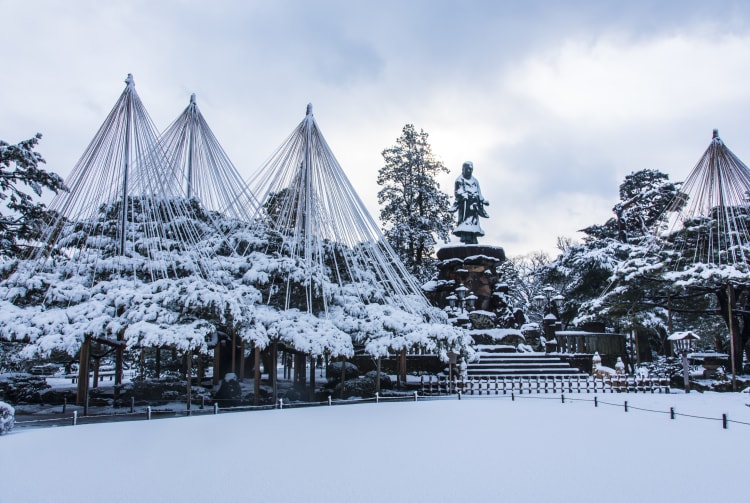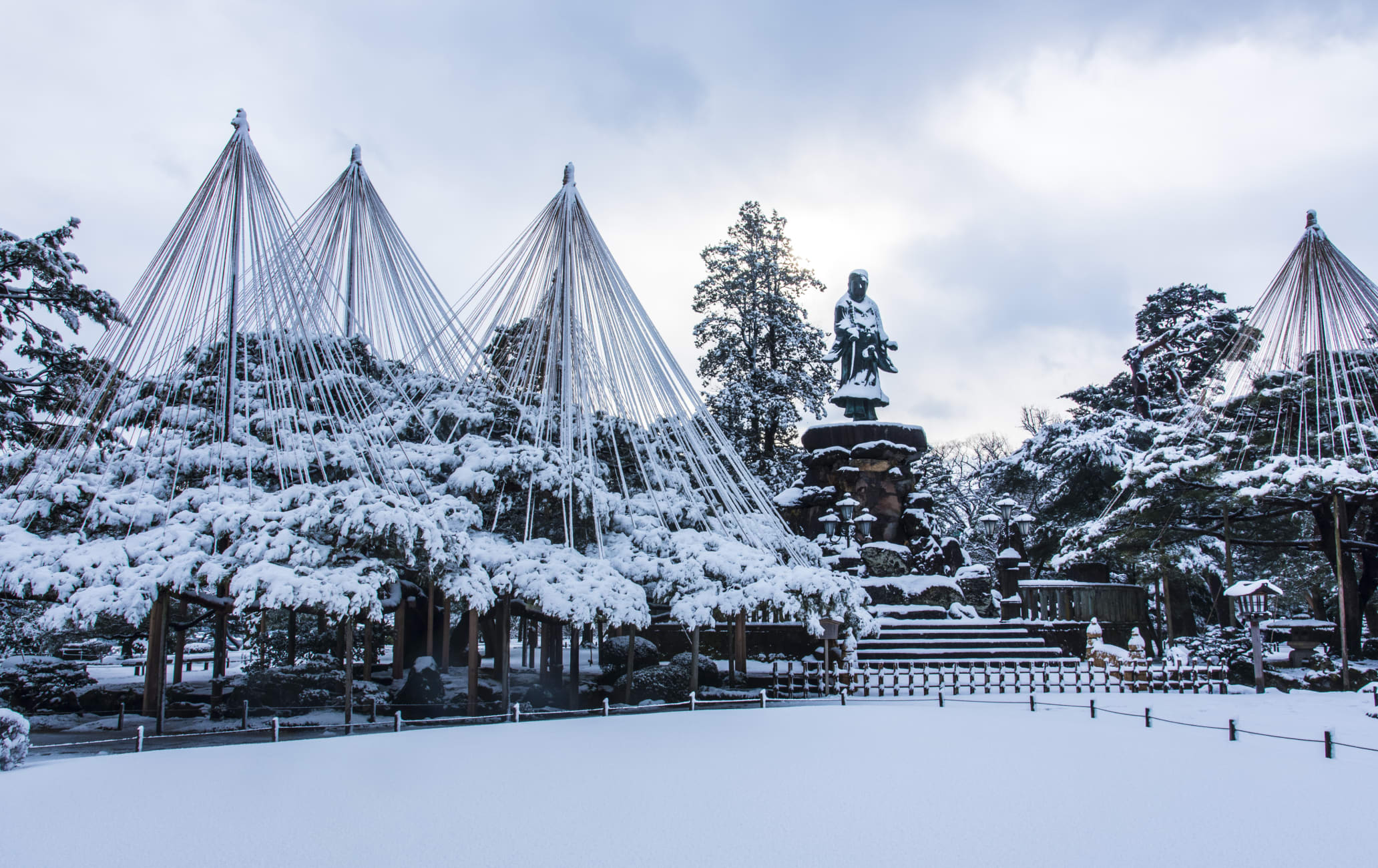One of Japan's three most famous gardens
Kenrokuen Garden is the focal point of Kanazawa and has a long and celebrated history. The garden was created over the span of several hundred years by the Maeda family, and today is one of the best examples of a strolling-style Japanese landscape garden. The garden offers something to enjoy whatever the season.
"Kenrokuen" means “garden that combines six characteristics." These six characteristics are spaciousness, seclusion, artifice, antiquity, water sources and magnifient views. Not every garden in Japan can combine all of these features but Kenrokuen does.
Don't Miss
- The naturally-powered water fountain below Kasumigaike Pond, which reaches 3.5 meters high
- Seisonkaku Villa for its two distinct styles of Japanese architecture
- Kotojitoro Lantern, the symbol of the garden, known for its two-legged design
How to Get There
Kenrokuen is easily accessed by bus from Kanazawa Station.
The ride takes 20 minutes and costs 200 yen. Alternatively, JR Rail Pass holders can take the JR buses bound for Korinbo using their passes. The garden is central to many of Kanazawa's main attractions.

The garden's evolution
Kenrokuen was once a private garden belonging to the Maeda family, who reigned over the Kaga domain from Kanazawa Castle . The Maeda family was one of the most powerful in the country in feudal times after the shogun's family. Construction began in 1676 with a landscape garden called Renchitei and the garden continues to evolve over three centuries.
In 1822, the garden took its present name and in 1874, the garden was opened to the public.
Experience the mindfulness of samurai times
Every feature of a traditional Japanese garden is present here: ponds, stone lanterns, waterfalls, stone paths, bridges, streams, tea houses and artificial hills. In this natural environment, you can easily spend at least a few hours absorbing the peaceful surroundings, designed for meditative practices during the feudal era.


Enjoy Kenrokuen whatever the season
Plum blossoms and then cherry blossoms bloom in spring, and there are a variety of flowers to see in summer, such as azalea. In fall, the garden comes alive with the blazing red Japanese maple leaves. The word "momijigari" refers to the hunt for spotting this stunning maple and this garden is the place to be. Come winter, the snow-covered pine trees along the pond offer romantic views. The trees are also illuminated for a short period in January and February.




Yukitsuri
Strung-up trees
You may have noticed that pine trees in the winter in Japan often have what looks like an umbrella of ropes strung from a pole above them and reaching down to the lower branches. This is the yukitsuri, a conical array of ropes built to support the branches of the trees and thereby prevent them from breaking under the weight of the heavy snowfalls of the winter. These are, after all, old trees—especially Kenrokuen's famous 200-year-old pine. Setting up the yukitsuri starts November 1 and they remain until around March 15.
Magnificent traditional Japanese villa
At the southeast end of the garden, you will find a villa built in 1863 by Lord Nariyasu Maeda as a comfortable retirement home for his mother. The enormous two-story structure is built in two styles. The main floor is built in a style called buke-shoin, a formal setting meant for receiving guests, and the second-floor design is called sukiya-shoin, featuring red, blue, and purple colors, giving it a more playful and relaxing atmosphere.
Seisonkaku Villa also functions as a museum, displaying dolls, kimono, and paintings.
Around Kenrokuen
The garden connects to Kanazawa Castle . Simply cross the bridge once out of the Ishikawa gate. Outside of the garden's Katsurazaka gate, the pedestrian road is lined with small restaurants and cafes serving casual lunch dishes, tea, and ice cream covered in gold leaf. Kanazawa accounts for 99% percent of all domestic gold leaf production. Several cafes, shops, and even museums offer gold leaf in various forms. The very strong presence of traditional arts and crafts in Kanazawa is a reflection of the strength and wealth of the Maeda family and their commitment to the arts.
There are several museums accessible on foot nearby, including the 21st Century Museum of Contemporary Art , the Ishikawa Prefectural Museum of Art , as well as places to further explore and learn various expressions of Japanese culture, such as the Kaga Yuzen Kimono Center and the Kanazawa Noh Museum.



































































